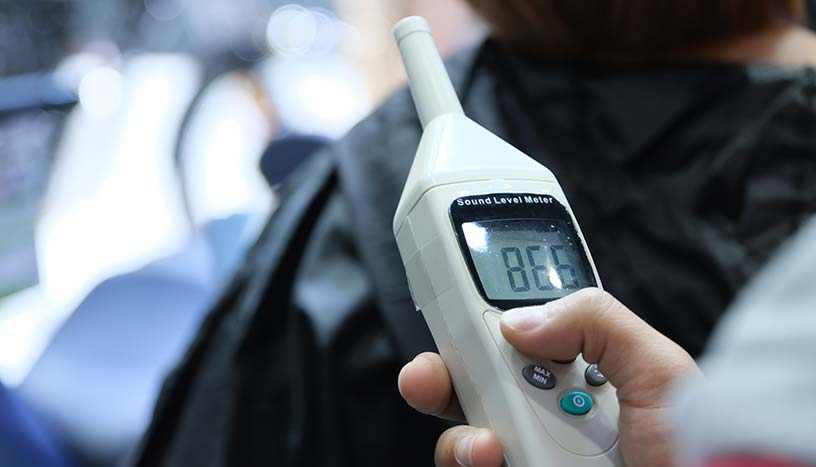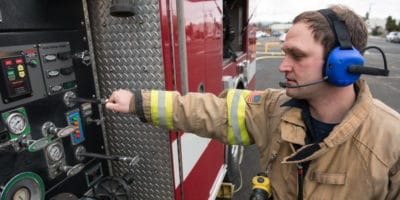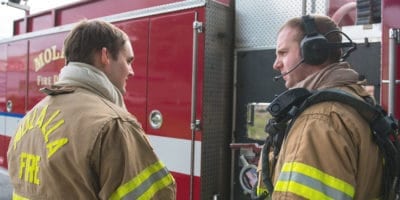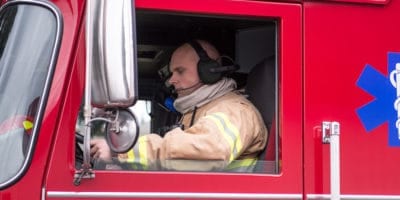How It Works: Hearing Protection
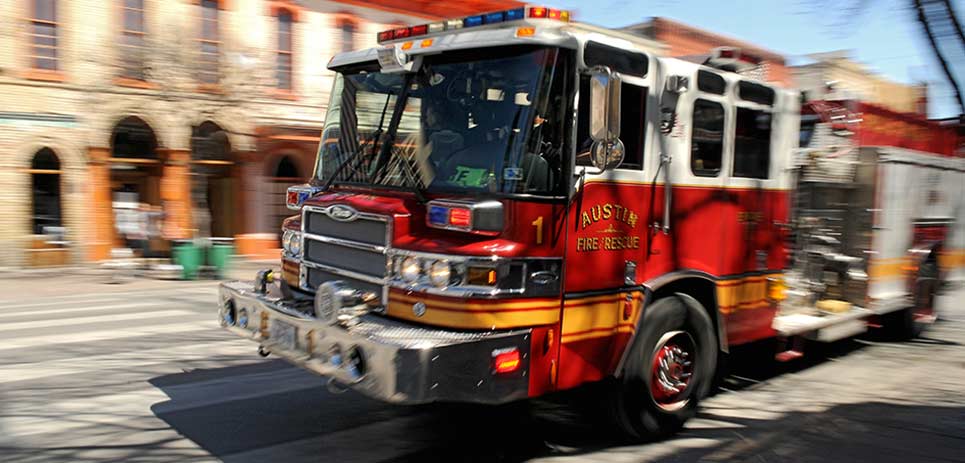
Who remembers Holiday parades when we were kids? The marching bands, cool cars and handfuls of candy being thrown our way. A lot of sounds, too, and some of them were pretty loud. Like the siren from the classic open-cab fire truck and fire crackers on the Fourth of July. “Cover your ears!”, our parents would shout in warning.
The concept that loud noises can contribute to hearing loss is nothing new, but we now have better ways to mitigate the risk.
Duration & Loudness = Bad News
Sounds that are too loud, or both loud and long lasting, can result in noise-induced hearing loss (NIHL). You remember diagramming the parts of the ear in health class? Noises can alter the inner-workings of our ears by damaging the tiny hair cell nerves that transmit sound signals to the brain.
Think of those tiny hairs as being blades of grass and noise is like feet walking over them. Light foot traffic bends the blades a bit but they eventually pop back up. No problem. Heavier use or all-out stomping is more likely to show signs of wear. That’s hearing loss.
Your Loud Limit
The recommended exposure is 85 decibels (dB) or less in an eight-hour time-frame, according to NIOSH. When engines, equipment and sirens exceed that amount, your exposure must be sharply reduced to stay safe. For every 3dB increase, your time in that environment should be cut in half. And stay away from anything over 140dB, which can do instant damage.
Not sure of the noise intensity, or decibels, of the equipment and tools in your department? Look it up or measure it. A noise rating label is provided by manufacturers of noise-emitting products. Portable sound meters can be purchased to take your own measurements. Tip: if you’re measuring an engine or equipment with variable RPM’s, bring it up to normal operating conditions and beyond in order to capture the upper range of the noise threshold. A generator under a load will be louder than one at idle.
What About Earplugs and Muffs?
Sure enough, traditional earplugs and muffs will block out noise. But they can’t distinguish between sounds that threaten your hearing, a firefighter’s raised voice or an alarm beeping on a console. Everything is muted. And some may find plugs and muffs to be uncomfortable to the point that they’ll refuse to wear them or frequently remove them in order to stay in touch with their environment.
Hearing is Tied to Performance
Having full awareness of your surroundings while on an emergency call helps you to respond to changing scenarios. Our sense of hearing gives us important inputs that combine with our other senses to round out an awareness of our surroundings. Veteran firefighters talk of the subtle sounds a fire can make that gives indications of how fuel and oxygen are being consumed, giving clues of a possible blocked exit path or structure collapse. It doesn’t get more critical than that.
Wireless Headset Features to Consider
Staying alert AND maintaining hearing protection allows your team to normally interact, especially when it’s loud. Look for wireless headsets with the following:
Listen-Through Technology: Listen-Through includes external mics allowing for situational awareness so you hear approaching traffic or voices from behind. No need to pull a dome off at the pump panel to hear. Look for a system that promotes ease of use – toggle on/off to activate is best.
Noise Reduction Rating (NRR) of 24 or Higher: By providing significant sound reduction matched with easy headset adjustments, you’re able to achieve a custom, comfortable fit. The right fit makes a truer seal over the ears and against noise.
Noise Suppression: Active noise suppression limits high impulse events such as an engine rev or ear-splitting whistles or bangs from being transmitted to the speakers in the ear domes. Like shooter’s muffs at a gun range, it’s an instant of silence followed by the return of normal voice and environmental sound.
Advancements in equipment and protective devices have evolved to better protect the user, and that includes hearing protection. Properly equipped emergency response teams deployed with wireless headsets will manage any scenario with clear communication when it counts.
